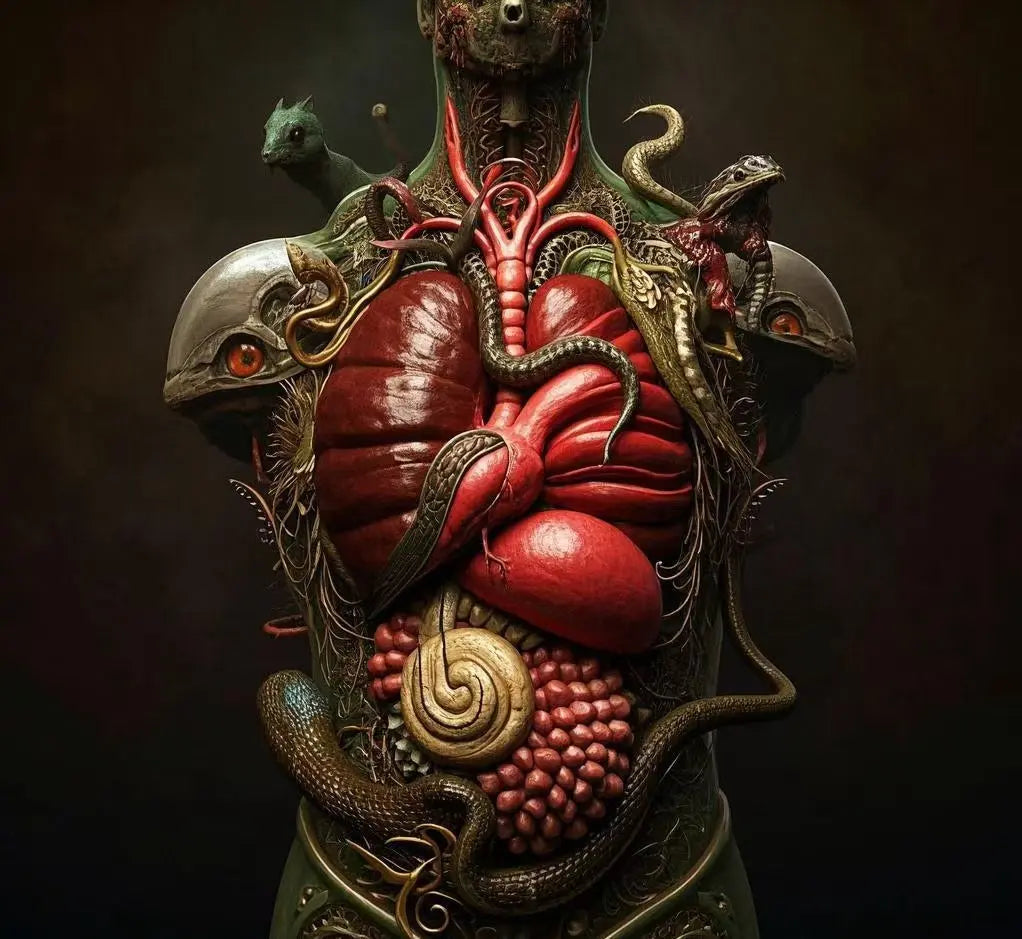The content of the doctrine of internal organs should include three aspects. (1) the five viscera, six viscera, Qi Heng's viscera and their associated tissues, organs and their functional activities and the interrelationship between them; ② gas, blood and fluid. Qi, blood and fluid is the basic material to maintain the functional activities of the viscera, but also rely on the functional activities of the viscera to produce and supplement; ③ meridian system. Meridians are connected to the internal and external organs, communication pathway, is an indispensable part of the doctrine of internal organs. Viscera and six internal organs of the surface relationship, the five viscera and the surface of the five senses and nine orifices of the contact, are relying on the meridians to achieve. However, customarily, often the meridians and blood and fluids in a separate chapter to emphasize its importance.
The five organs, namely the heart, liver, spleen, lungs and kidneys, are the organs that generate and store essence and have the characteristic of hiding essence and not diarrhea. Formerly included in the pericardium also known as the six viscera, but the pericardium is located in the outer contour of the heart, there is a role in protecting the heart, its lesions are basically the same as the heart, so traditionally it is attached to the heart, still known as the five viscera.
Six viscera, namely, gallbladder, stomach, large intestine, small intestine, bladder, triple jiao (no triple jiao called five viscera), is subject to the Sheng and transmission of water and grain organs, with the transmission of turbidity, diarrhea, but not hide the characteristics. Such as “Su Wen - five viscera,” said: “the five viscera, hidden essence and not diarrhea, so full and can not be real; six bowels, the transmission of chemical substances and not hidden, so real and can not be full.”
Qiheng's bowels, that is, brain, marrow, bone, pulse, gallbladder, uterus. “Qi” is different, ‘constant’ for the meaning of constant, because of its form like viscera, function like viscera, different from the general viscera, so it is called Qi constant viscera. Among them, the gallbladder is one of the six bowels, but the six bowels, only it is hidden clean liquid, so it is attributed to the bowels of Qiheng.
Dirty and viscera between the existence of yin and yang, the relationship between the table. Dirty in the Yin; bowels in the table, is Yang; heart and small intestine, liver and gallbladder, spleen and stomach, lungs and large intestine, kidneys and bladder, pericardium and Sanjiao phase table. The relationship between the organs and internal organs, is through the meridians to contact, dirty meridians in the internal organs, internal organs of the meridians in the viscera, and each other through the gas, in physiology and pathology of the interconnection, mutual influence.
Although each viscera has its own function, but each other and interconnected, together constitute the organic whole of the animal body. At the same time, viscera and body tissues (veins, tendons, flesh, skin, bones), five nine orifices (tongue, eyes, mouth, nose, ears and front and back of the yin) and other closely linked. Such as the five viscera are born between each other, six viscera to undertake cooperation between the internal organs, the internal organs between the surface and the five viscera and limbs of the existence of the official orifices belonging to the relationship between the opening of the orifices, which constitutes the animal body to the five viscera as the center of the five functional systems, the function of each system is interlinked with the unity of the whole.
Veterinary medicine in the concept of internal organs, and modern veterinary medicine, “organs” concept, although the same name, but its meaning is very different. Viscera is not entirely an anatomical concept, but more importantly a physiological, pathological concept, representing a functional system.

